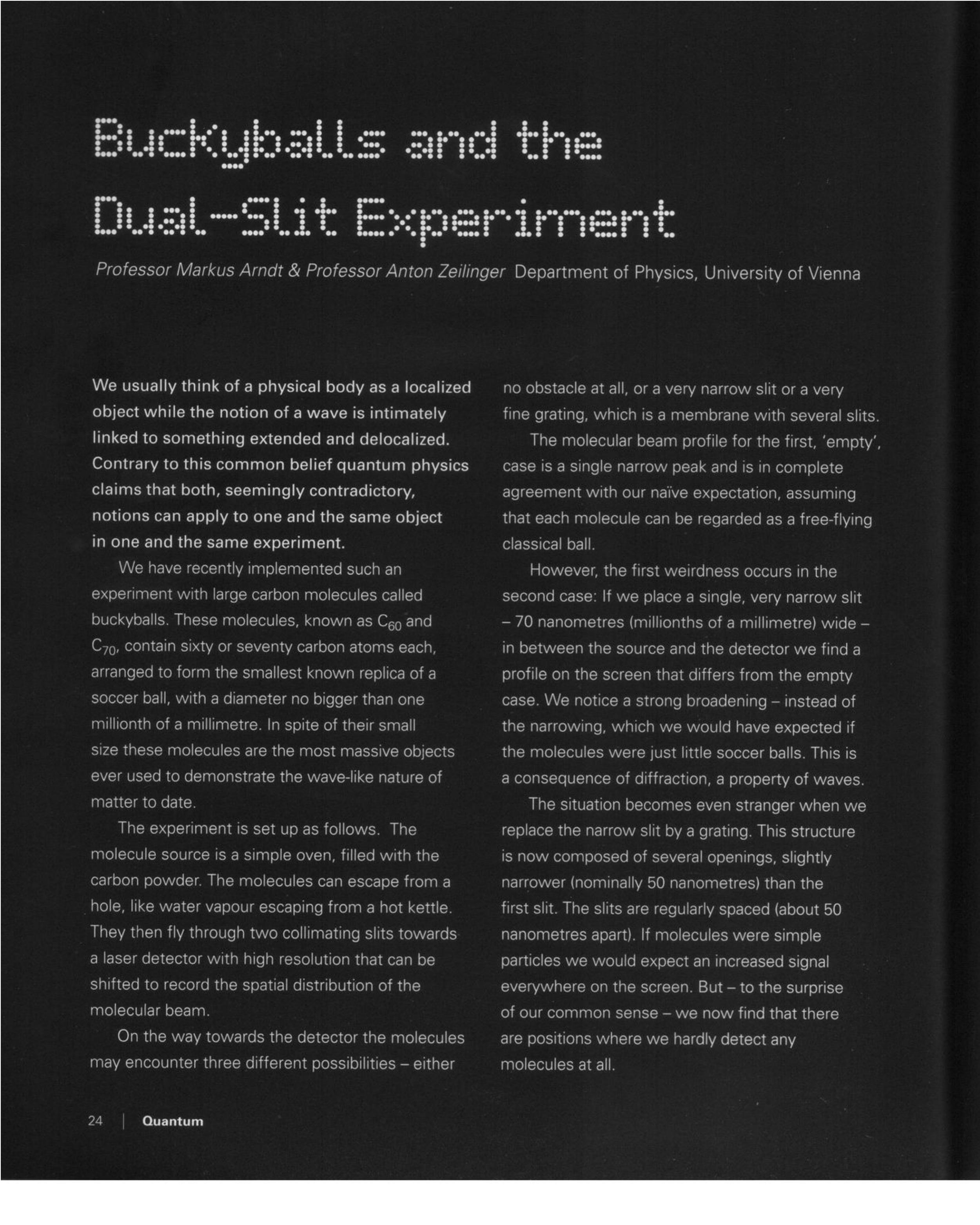Quantum: A Guide For The Perplexed by Jim Al-Khalili

Author:Jim Al-Khalili [Al-Khalili, Jim]
Language: eng
Format: epub, pdf
ISBN: 9781780225340
Publisher: Orion Publishing Group
Published: 2012-10-25T00:00:00+00:00
Quantum Reality, According to de Broglie and Bohrn
Chris Dewdney School of Environmental and Earth Sciences, University of Portsmouth
Even though the de Broglie-Bohm interpretation is not the most popular one among physicists, a number of different versions of it exist. The common basis of the different approaches is that particles have well-defined positions that evolve according to deterministic equations of motion. Given some assumed initial positions of all the particles in a system (remember these cannot be controlled – see main text) and the way in which the wave function changes with time, one can calculate exactly how the particles will move. So the whole future (and the past) of the system can be predicted, including the results of any measurements that may be involved. In this respect there is no more mystery to quantum mechanics than there is to classical mechanics. The different approaches arise from what we say about how the trajectories come about.
Bohm originally presented the theory in terms of a new type of force, arising from a quantum potential, which pushes the particles to the right places and accounts for the difference between quantum and classical behaviour. Bohm wanted to bring out, by contrast, the essential differences between the quantum and the classical worlds. Others follow John Bell’s version and argue that all we need is the equation that determines the trajectories (which should be seen as a new type of law of nature in itself) and that we should eschew all talk of quantum potentials and quantum forces that, regrettably, straitjacket the theory in an ugly Newtonian form. One of the problems, which may have hindered the acceptance of the de Broglie-Bohm interpretation in the past, is that, in all but the most simple and uninteresting cases, the trajectories cannot be calculated by hand. However, since the late 1970s, starting with the two-slit experiment, many explicit calculations have been carried out clarifying exactly how the approach works.
An interesting feature of the de Broglie-Bohm interpretation, as Bohm pointed out in 1952, is that, although the basic theory does reproduce all of the expected results, one can consider variations, which arise from relaxing some of the assumptions of the interpretation, that introduce novel observable effects. Work is currently underway to determine the circumstances in which such effects may be detectable.
One of the most fundamental features of quantum mechanics that is put into stark relief by the de Broglie-Bohm interpretation is nonlocality. Nonlocality is the coupling of separate systems in circumstances in which, according to relativity, no physical interaction between them should be possible. According to relativity all influences must propagate at, or less than, the speed of light, but nonlocality defies this edict. One of the most interesting questions in de Broglie-Bohm theory today is how its explicit nonlocality can be squared with the requirements of relativity theory. It is accepted that no measurements that can be done with quantum systems can reveal a conflict with relativity by demonstrating superluminal influences explicitly: we can’t use quantum mechanics to signal at speeds faster than the speed of light.
Download
Quantum: A Guide For The Perplexed by Jim Al-Khalili.pdf
This site does not store any files on its server. We only index and link to content provided by other sites. Please contact the content providers to delete copyright contents if any and email us, we'll remove relevant links or contents immediately.
The Complete Stick Figure Physics Tutorials by Allen Sarah(7339)
Secrets of Antigravity Propulsion: Tesla, UFOs, and Classified Aerospace Technology by Ph.D. Paul A. Laviolette(5336)
Thing Explainer by Randall Munroe(3911)
The River of Consciousness by Oliver Sacks(3574)
The Order of Time by Carlo Rovelli(3164)
How To by Randall Munroe(3078)
A Brief History of Time by Stephen Hawking(2994)
I Live in the Future & Here's How It Works by Nick Bilton(2963)
What If?: Serious Scientific Answers to Absurd Hypothetical Questions by Randall Munroe(2670)
The Great Unknown by Marcus du Sautoy(2664)
Midnight in Chernobyl by Adam Higginbotham(2519)
Blockchain: Ultimate Step By Step Guide To Understanding Blockchain Technology, Bitcoin Creation, and the future of Money (Novice to Expert) by Keizer Söze(2467)
Networks: An Introduction by Newman Mark(2383)
The Meaning of it All by Richard Feynman(2320)
Easy Electronics by Charles Platt(2310)
The Tao of Physics by Fritjof Capra(2247)
Midnight in Chernobyl: The Untold Story of the World's Greatest Nuclear Disaster by Adam Higginbotham(2200)
Introducing Relativity by Bruce Bassett(2098)
When by Daniel H Pink(2098)
